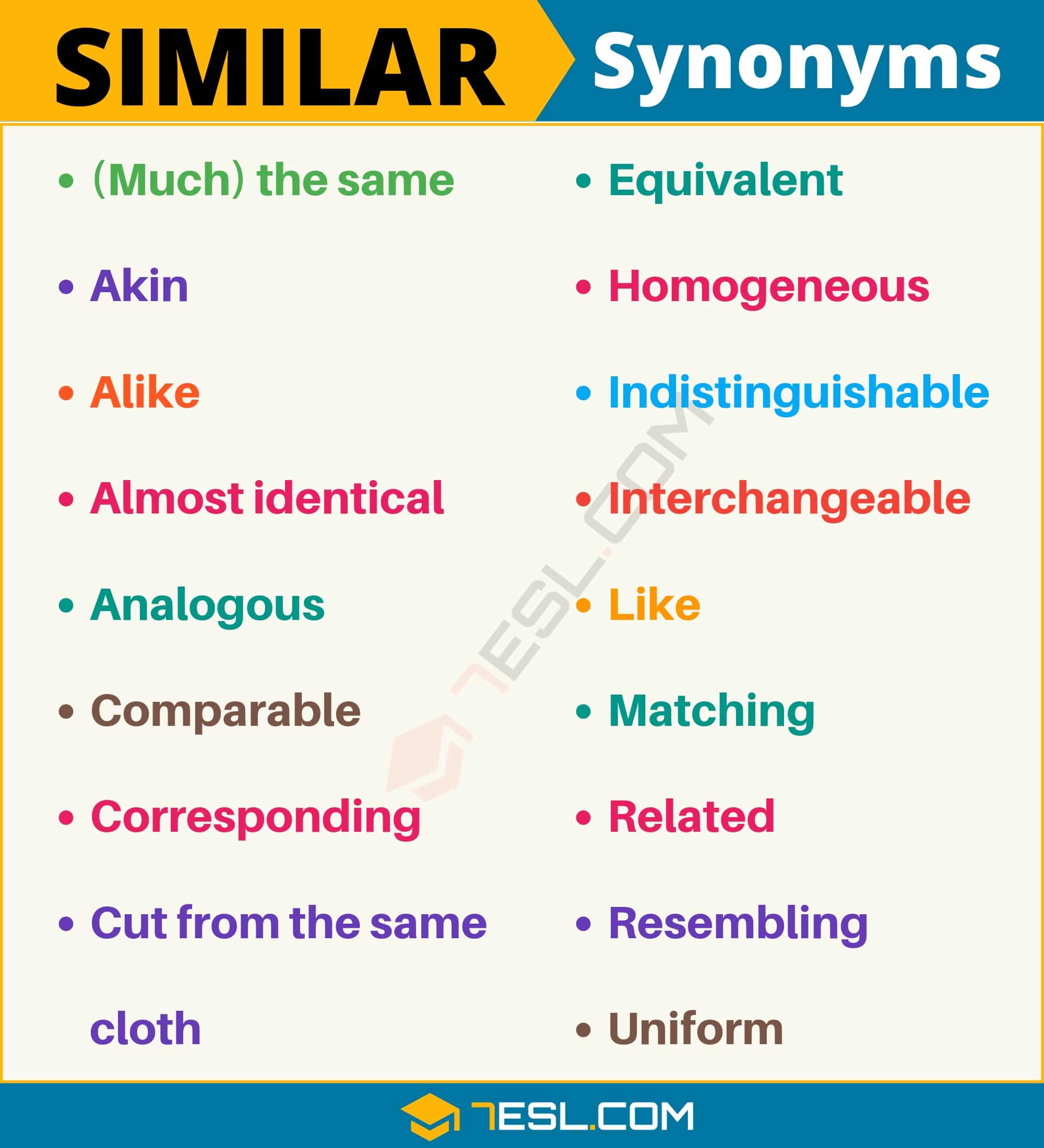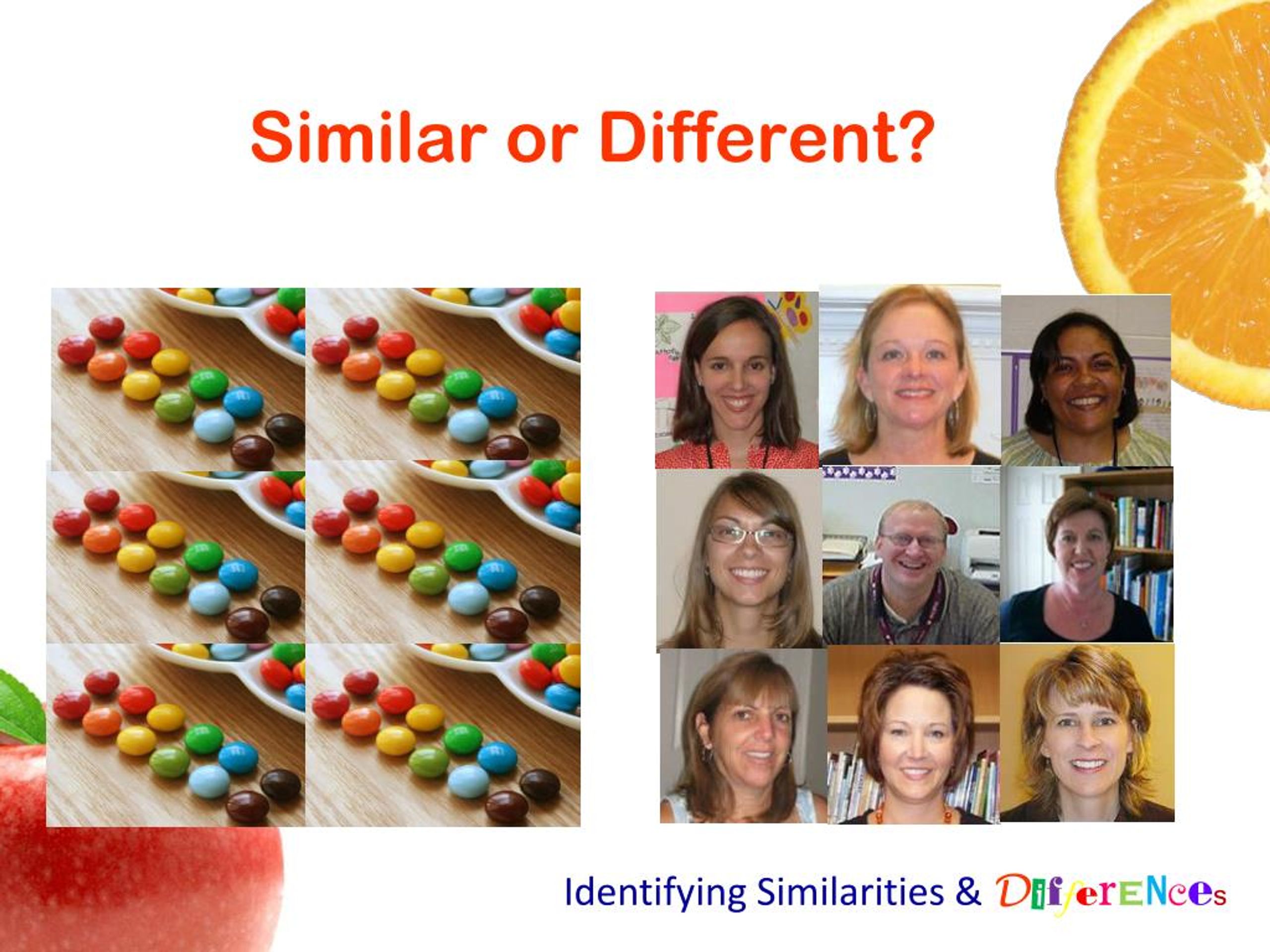Unpacking The Power Of "Similar": A Deep Dive Into Connections, Comparisons, And Beyond
So here's the deal, we all know what "similar" means right? It's that little word we use when two things are kinda alike but not exactly twins. But have you ever stopped to think about how powerful this concept really is? From the way we compare products before buying to understanding human relationships, "similar" plays a massive role in our daily lives. Let me tell you, it's more than just a word—it's a gateway to understanding the world around us.
Now, before we dive deep into the rabbit hole of "similar," let's break it down. When we say something is "similar," we're pointing out the shared qualities or characteristics between two or more things. It could be anything from comparing two smartphones to figuring out why you and your best friend vibe so well. The beauty of "similar" lies in its flexibility. It's a tool we use to make sense of the chaos, creating order in a world that's constantly changing.
And here's the kicker—this concept isn't just limited to objects or people. It extends to ideas, cultures, and even technologies. In today's fast-paced world, being able to identify what's "similar" can save you time, money, and a whole lot of headaches. So buckle up because we're about to explore the ins and outs of this fascinating concept and how it impacts our lives in ways you might not even realize.
- Quizletcom Your Ultimate Study Companion
- Why Fmovieszto Is Not The Answer A Deep Dive Into Movie Streaming Platforms
What Exactly Does "Similar" Mean Anyway?
Alright, let's get technical for a sec. "Similar" is an adjective that describes things sharing common traits or characteristics. But here's the twist—it doesn't mean they're identical. Think of it like siblings. They might have the same parents, but they're not carbon copies of each other. In the world of linguistics, "similar" is all about finding patterns and overlaps. It's about recognizing the familiar in the unfamiliar, and that's where the magic happens.
Now, if we were to put it in a mathematical context, "similar" is like a Venn diagram. You've got two circles overlapping, and that overlapping part? That's where the similarities lie. And guess what? This concept isn't just for math nerds. It applies to everything from fashion trends to global politics. The ability to spot what's "similar" helps us make informed decisions and build connections that matter.
Why Understanding "Similar" Matters
Here's the thing—understanding "similar" isn't just about sounding smart in a conversation. It's about empowerment. When you can identify similarities, you're better equipped to navigate the complexities of life. Whether you're choosing a new phone, deciding on a career path, or even picking a movie to watch, recognizing what's "similar" can guide you toward the right choice.
- Mrdeepfake The Fascinating World Of Aidriven Faces
- Unleashing The Power Of G Movies Your Ultimate Guide To Entertainment
Take shopping, for example. Let's say you're looking for a laptop. You've got a budget, a list of features you want, and a sea of options. By identifying what's "similar" across different models, you can narrow down your choices and make a decision that aligns with your needs. It's like having a secret weapon in your decision-making arsenal.
How "Similar" Shapes Our Daily Lives
Let's zoom in on the everyday impact of "similar." From the moment we wake up, we're surrounded by comparisons. The coffee we drink, the clothes we wear, even the news we consume—it's all about finding what resonates with us. And "similar" is the thread that ties it all together.
Think about social media for a second. Algorithms are constantly analyzing what's "similar" to the content you engage with, serving up recommendations that keep you scrolling. It's not just about convenience; it's about creating a personalized experience that feels relevant to you. And let's be honest, we all love feeling understood, right?
Breaking Down the Concept: Key Characteristics
Now that we've established why "similar" matters, let's break it down further. There are a few key characteristics that define this concept. First up, we've got "shared attributes." This is the foundation of "similar." If two things share certain qualities, they're considered similar. It could be color, shape, function, or even purpose.
Next, we've got "degree of resemblance." Not all similarities are created equal. Some things are more similar than others, and that's where the degree comes into play. Think of it like a sliding scale. On one end, you've got things that are almost identical, and on the other, you've got things that share just a few traits. It's all about perspective and context.
Real-World Examples of "Similar" in Action
Let's talk examples because, honestly, they make everything clearer. Picture this—you're at a car dealership, and you're trying to decide between two models. They're both sedans, both have leather interiors, and both come with advanced safety features. Sounds like a no-brainer, right? But wait, there's more. One has better fuel efficiency, while the other has a more powerful engine. Now, you've got to weigh the similarities and differences to make the best choice.
Or how about in the world of art? Artists often draw inspiration from each other, creating works that are "similar" in style or technique. It's not copying; it's paying homage. And that's the beauty of "similar"—it allows for creativity and innovation while still maintaining a sense of connection.
The Science Behind "Similar": Cognitive Psychology and Beyond
Dive a little deeper, and you'll find that "similar" is rooted in cognitive psychology. Our brains are wired to recognize patterns and make connections. It's how we learn, how we remember, and how we navigate the world. When we encounter something "similar," our brains go into overdrive, trying to make sense of it all.
Studies have shown that recognizing similarities can actually boost memory retention. It's like creating a mental map where everything is interconnected. And let's not forget about the emotional aspect. When we find something "similar" to what we already know, it creates a sense of comfort and familiarity. It's like running into an old friend in a crowded room—it feels good.
Applications in Technology and AI
Now, let's shift gears and talk tech. In the world of artificial intelligence, "similar" is a game-changer. Algorithms are designed to identify patterns and make predictions based on similarities. From recommendation engines to facial recognition software, the concept of "similar" is at the heart of it all.
Take Netflix, for instance. Their algorithm analyzes what you've watched and finds shows that are "similar" in genre, style, or even cast. It's how they keep you binge-watching for hours on end. And let's not forget about Google's search algorithm. It's constantly analyzing what's "similar" to the keywords you type in, delivering results that are both relevant and useful.
Challenges and Misconceptions About "Similar"
Of course, no concept is without its challenges. One of the biggest misconceptions about "similar" is that it implies perfection. People often think that if two things are "similar," they must be identical in every way. Spoiler alert—they're not. "Similar" is all about finding common ground, not creating clones.
Another challenge is subjectivity. What's "similar" to one person might not be the same for another. It's all about perspective. And that's okay. In fact, it's what makes the concept so dynamic. It's not about having one right answer; it's about exploring the possibilities.
How to Navigate the Gray Areas
So how do we navigate these gray areas? The key is communication. When discussing what's "similar," it's important to clarify what criteria you're using. Are you talking about function? Appearance? Purpose? Being specific helps avoid misunderstandings and ensures everyone's on the same page.
And let's not forget about empathy. When someone sees something as "similar" that you don't, try to understand their perspective. It's all about building bridges, not walls. After all, that's what "similar" is all about—creating connections.
Future Trends: Where Is "Similar" Headed?
Looking ahead, the concept of "similar" is only going to become more important. As technology continues to evolve, our ability to identify and analyze similarities will grow exponentially. Imagine a world where AI can predict not just what you want to watch next but also what you're likely to buy, read, or even think. It's both exciting and a little scary.
But here's the thing—while technology can enhance our understanding of "similar," it can't replace the human element. At the end of the day, it's our ability to empathize, connect, and create that truly sets us apart. So as we move forward, let's embrace the power of "similar" while keeping our humanity at the forefront.
Key Takeaways and Practical Tips
Here's the bottom line—"similar" is more than just a word; it's a tool for understanding and navigating the world. Whether you're making decisions, building relationships, or exploring new ideas, recognizing what's "similar" can guide you toward success.
- Pay attention to shared attributes and patterns.
- Be open to different perspectives and interpretations.
- Use "similar" as a starting point for deeper exploration.
- Combine technology with empathy for the best results.
Final Thoughts and Call to Action
So there you have it—a deep dive into the world of "similar." From its linguistic roots to its applications in technology and beyond, this concept plays a vital role in our lives. And here's the best part—you don't need a PhD to harness its power. All it takes is a little curiosity and a willingness to explore.
Now it's your turn. Take what you've learned and apply it to your own life. Whether you're comparing products, building relationships, or simply trying to make sense of the world, remember the power of "similar." And don't forget to share your thoughts in the comments below. Let's keep the conversation going!
Table of Contents
- What Exactly Does "Similar" Mean Anyway?
- Why Understanding "Similar" Matters
- Breaking Down the Concept: Key Characteristics
- The Science Behind "Similar": Cognitive Psychology and Beyond
- Challenges and Misconceptions About "Similar"
- Future Trends: Where Is "Similar" Headed?
- Key Takeaways and Practical Tips
- Final Thoughts and Call to Action
- Footybites The Ultimate Football Snack For Every Match Day
- Why Livcam Is The Gamechanger For Live Streaming In 2023

90+ Synonyms for "Similar" with Examples Another Word for “Similar

Look2ag A Comprehensive Guide To Understanding The Platform

Ppt Identifying Similarities Amp Differences Powerpoint Presentation